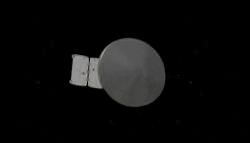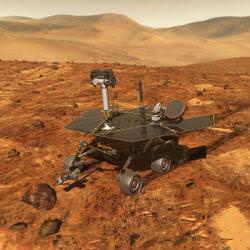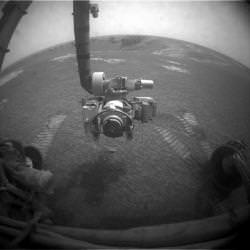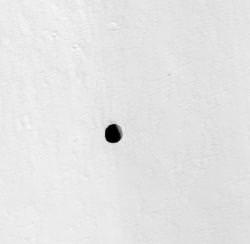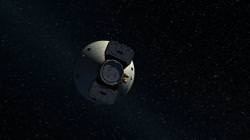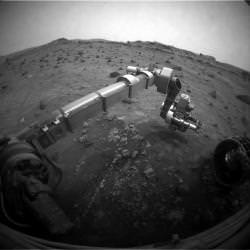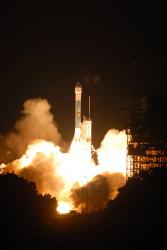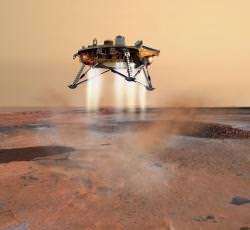I’m not sure what you were expecting, but here’s the first image captured by NASA’s Phoenix Mars Lander from space. What, you were expecting blackness and maybe a star or two? Nope, this is a photo taken by the lander’s robotic arm showing its scoop nestled inside the spacecraft. But don’t worry, in just a few months, you’ll be seeing the same picture, but filled with Martian soil.
The image was captured by the lander’s Robotic Arm Camera, which was pointed into the robotic arm’s scoop. Both instruments are encased in a protective biobarrier that insures Earth-based microbes don’t contaminate its experiments. Surprisingly, this is going to be the only picture the camera is going to take before the spacecraft lands on Mars. I guess, this same shot might get a little boring.
Once it reaches Mars, the spacecraft will use this robotic arm to dig trenches in the Martian polar soil. It’ll scoop up soil and water-ice samples, and then deliver them to several instruments on the lander’s deck. These will test the samples for water, chemicals, and even the byproducts of past or present life.
The camera that took this picture is attached to the robotic arm, just above the scoop. It’ll provide close up images of the Martian surface, and help scientists decide where they’re going to dig for samples.
Original Source: UA News Release


